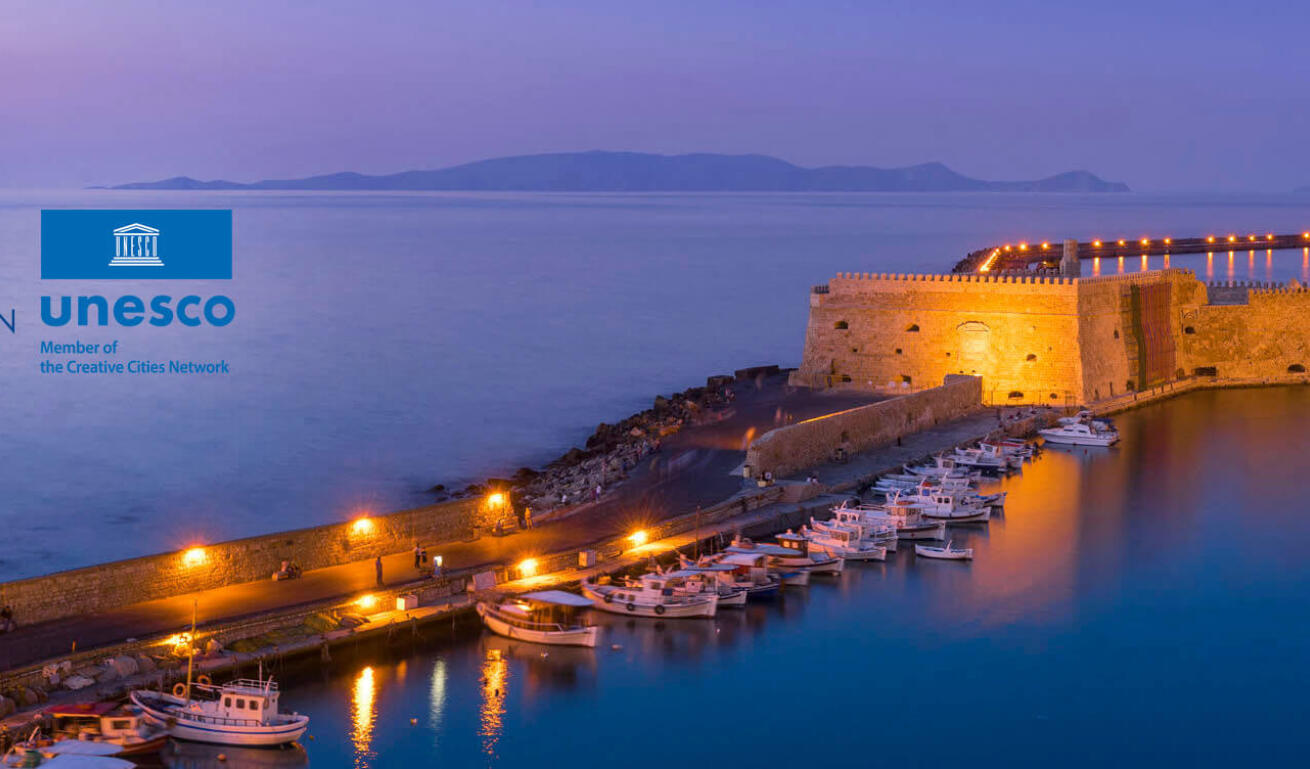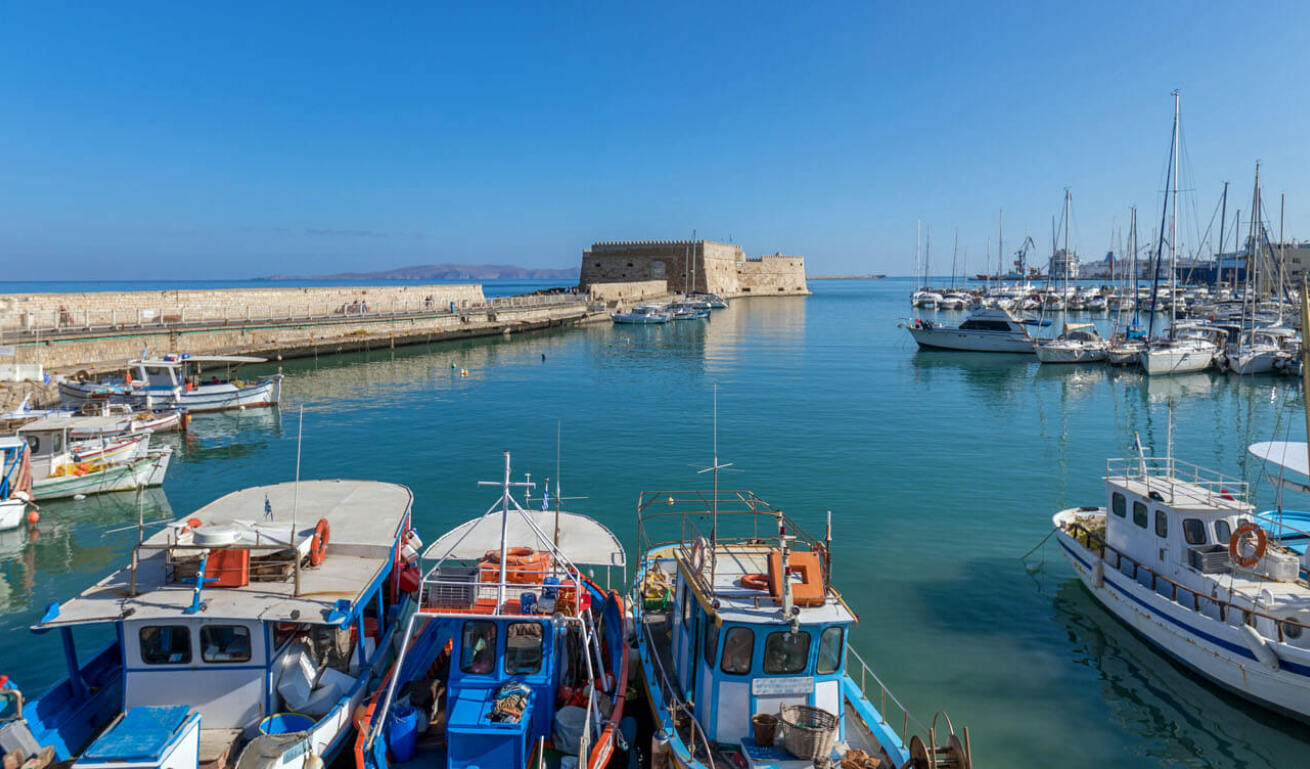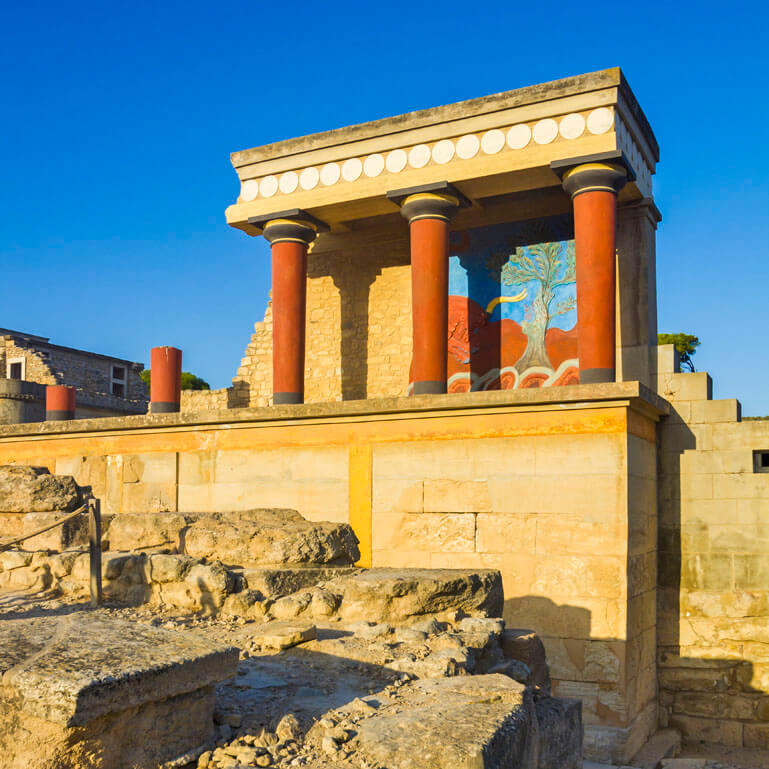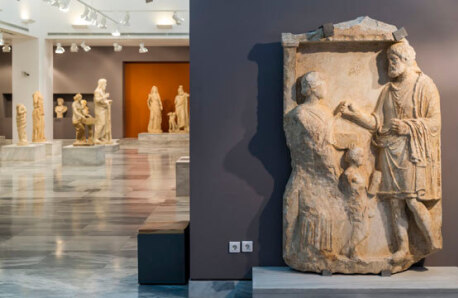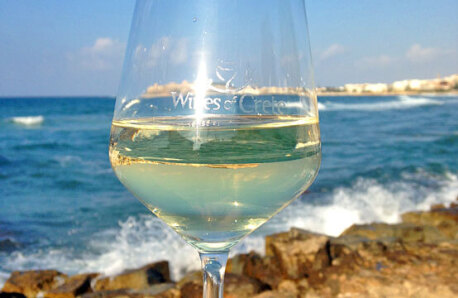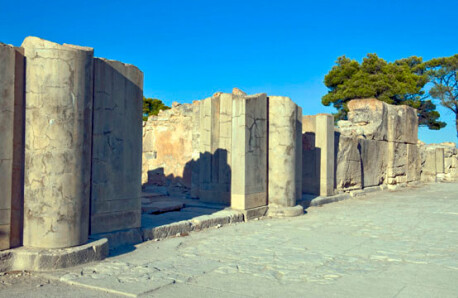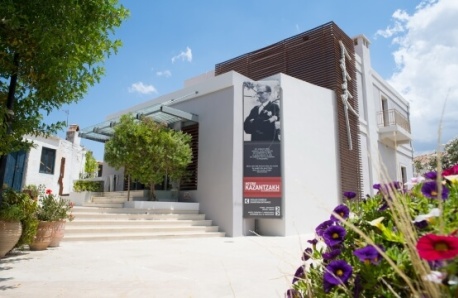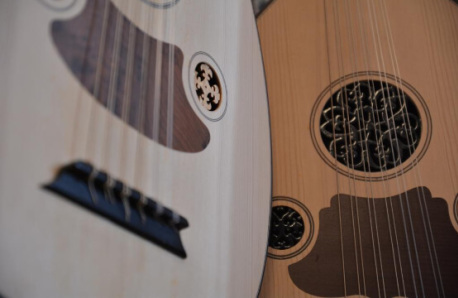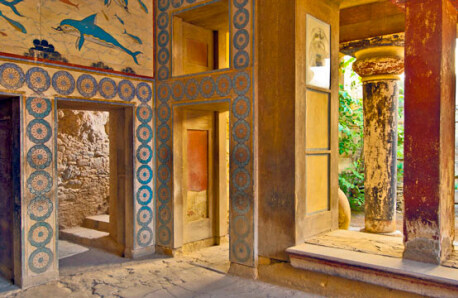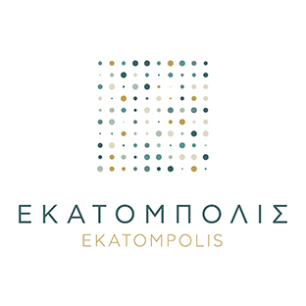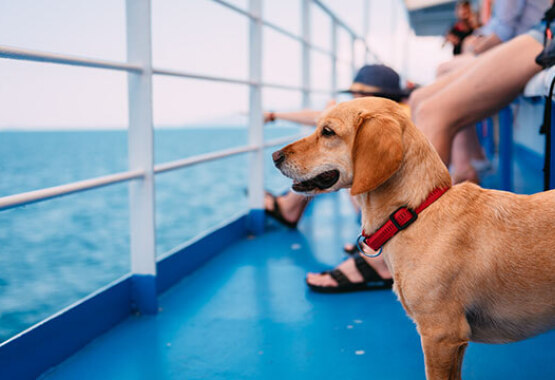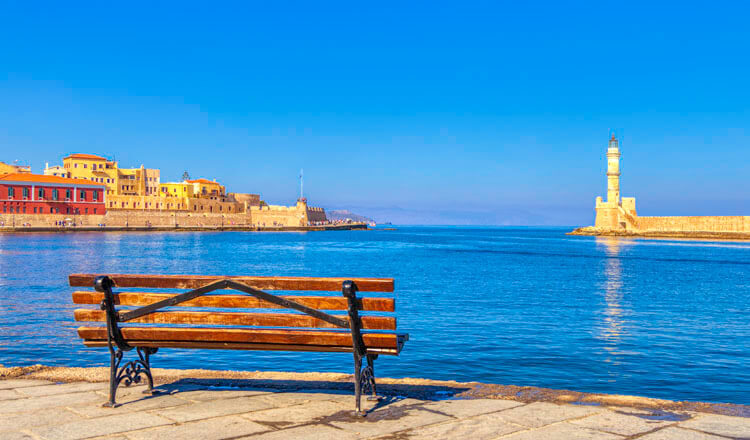Start your visit at the old Venetian port where you can see the vaulted tarsanades (shipyard) where ships used to be built during the Middle ages. On its west you can’t miss the 16th c. Koule Fortress whose first walls were built by the Arabs and were later reinforced by the Venetians in the 15th century. The Martinengo bastion, the only one out of seven that is preserved today, is where the renowned writer N. Kazantzakis’ tomb is located and overlooks the city. Τhe are only 2 out of 4 entrances to the city that still stand and you can see, Chanioporta (1570) Gate with its marble relief winged Lion of Saint Marc and the New Gate (1587) on the south side of the fortress.
In the heart of the city there are many monuments dating back to the Middle Ages, a period in which Heraklion witnessed great prosperity. From the port, ascending 25 Avgoustou (August) street, you will reach the public square, where the church of Agios Titos is found built in 1872 on the site where a Byzantine church once stood. Next to it lies the 16th c. Venetian Loggia, a Venetian building with ornate arcades and walls, sculptures etc. that served as a meeting place for the Duke and other noblemen during the Venetian period.
Don’t miss Heraklion’s Venetian and Turkish fountains, scattered around the city. The most famous one is the Venetian-style Μorozini fountain (aka the Lions fountain, 1628), a landmark for locals and visitors alike. Other noteworthy Venetian fountains are the Bembo fountain (1552-1554) on Kornaros Square, the Sagredo fountain (1602-1604) built in the northwestern corner of Loggia building, and Priuli fountain (1666) located near the port. The most interesting Turkish fountains are: Philanthropic fountain (1776), on Kornarou Square next to Bembo fountain, where in our days you can enjoy a refreshment as it runs as a coffeehouse; Idomeneas fountain (behind the Historical Museum of Crete), Genitsar Aga Fountain (on Ikarou street) and many more.
Among the churches of Heraklion the one that stands out is the imposing Metropolis of Agios Minas, on Agia Ekaterini Square, built between 1862-1895. Adjacent to it, stands the chapel of Mikros Agios Minas and on the northeast you can pay a visit to the 16th c. church of Agia Ekaterini, which runs as a museum housing exhibits from the Cretan Renaissance. The church of Agios Markos (13th century) towers over Venizelou Square. Other significant churches in the city are Panagia Akrotiriani, Panagia ton Stavroforon, the Monastery of Agios Petros and Pavlos etc.
The Heraklion Archaeological Museum, one of the most significant museums in Greece, must be added to your to see list; it showcases unique treasures of the Minoan civilization unearthed from Knossos, Phaistos, Malia and other sites. Other museums that are noteworthy are the Historical Museum, the Museum of Natural History and the Cretaquarium (aquarium in the area of Gournes). At a short distance from the city of Heraklion, in the area of Hersonissos, you can enjoy a golf game on a court ideal for either beginners or advanced players.
Last but not least, the food market of Heraklion, is where you will find all sorts of products as well as traditional Cretan ones such the famous Cretan olive oil, raki, local wine, honey, herbs, etc. which you can just as well take back home with you as a souvenir!


